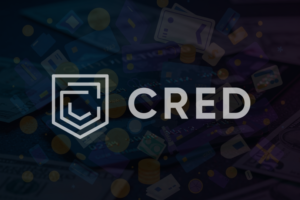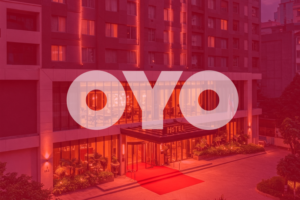Remember 2007? Flipkart was just an idea taking shape in a cramped Bangalore apartment. The iPhone had just launched. Facebook was still mostly for college students. And two young entrepreneurs were about to bet their careers on a crazy notion—that Indians would someday shop online.
With just $6,000 in savings and an almost stubborn belief in their vision, Sachin and Binny Bansal (no relation, just one of those coincidences) started selling books through a rudimentary website they called Flipkart. Fast forward to today, and that tiny operation has transformed into a $37.6 billion juggernaut that completely rewrote how Indians think about shopping.
What makes the Flipkart story so fascinating isn’t just the billions they eventually made. It’s how they tackled seemingly impossible challenges with startlingly simple yet brilliant solutions. Their journey offers a masterclass in entrepreneurship that’s worth unpacking for anyone passionate about business, innovation, or understanding how India’s digital economy evolved.

The Trust Problem No One Could Solve
Back in 2007, starting an e-commerce business in India seemed like madness. Less than 5% of Indians had internet access. Credit cards were rare treasures. Addresses often involved landmarks rather than street numbers. And perhaps most damning—Indian shoppers were deeply suspicious of paying for anything they couldn’t touch, smell, and examine first.
Global giants had tried and failed to crack this market. But the Bansals saw something others missed.
“Indians don’t resist technology—they resist uncertainty,” Sachin once told a gathering of entrepreneurs. This insight led to their breakthrough moment in 2010: Cash on Delivery.
The concept was almost laughably straightforward. Order online, but only pay after your package arrives and you’ve inspected it. This wasn’t just a payment option—it was a trust bridge that made e-commerce accessible to millions of skeptical Indian consumers virtually overnight.
The results were staggering. Within months of introducing Cash on Delivery, sales increased tenfold. Suddenly, people who had never shopped online were becoming regular customers. A decade later, industry reports would attribute nearly 60% of India’s initial e-commerce adoption to this one innovation.
If It Doesn’t Exist, Build It
Most startups focus on their core product. Flipkart quickly realized they’d need to build much more.
When deliveries kept going missing or arriving damaged, the Bansals made an audacious move—they created eKart, their own logistics company. When online payments proved problematic, they built a digital wallet solution years before fintech became trendy. When suppliers couldn’t provide reliable inventory data, they developed their own inventory management system for sellers.
This “build what’s missing” approach wasn’t just about vertical integration—it was about controlling the entire customer experience in a market where reliability was the ultimate luxury.
Take their logistics operation. Conventional wisdom said India’s infrastructure challenges made reliable e-commerce delivery impossible. The Bansals disagreed. They trained thousands of delivery personnel to navigate India’s labyrinthine neighborhoods. They created custom packaging to survive monsoon downpours. They built address-mapping systems that could make sense of directions like “blue building opposite the temple with the red flag.”
By 2015, eKart had become India’s largest e-commerce logistics company, delivering millions of packages monthly. What began as a necessity had transformed into one of Flipkart’s strongest competitive moats—one that even Amazon with its billions struggled to replicate.
The Mobile Revolution Before Anyone Else Saw It
Perhaps the most prescient move in Flipkart’s history was their early pivot to mobile commerce around 2012, when most global retailers still treated smartphones as an afterthought.
The Bansals recognized something profound: most Indians would experience the internet first through smartphones, not computers. While their competitors were optimizing desktop experiences, Flipkart went all-in on mobile.
They acquired Myntra, a fashion-focused mobile app, for $330 million in 2014. They briefly went “app-only” in 2015—a controversial move that, while eventually reversed, forced them to perfect their mobile experience years before competitors.
The company built lightweight apps that worked on basic phones with spotty connections. They created interfaces in multiple Indian languages when English literacy was still a significant barrier. Their search algorithms learned to understand “Hinglish”—that uniquely Indian mixture of Hindi and English that millions use in everyday conversation.
When India’s smartphone revolution exploded—with mobile internet users growing from 30 million in 2012 to over 600 million today—Flipkart was years ahead of the market.
David vs. Goliath: The Amazon Showdown

When Jeff Bezos announced Amazon’s entry into India in 2013, tech headlines practically wrote Flipkart’s obituary. How could a local startup possibly compete with a global behemoth willing to lose billions to win the market?
The battle that followed became legendary in business circles. Amazon brought its global playbook and seemingly unlimited resources. Flipkart countered with its deep understanding of Indian consumers and a willingness to fight for every percentage point of market share.
The competition turned fierce, sometimes even personal. When Amazon launched its Prime Day sales, Flipkart countered with a massive discount campaign literally the day before. When Bezos visited India wearing a traditional Indian outfit and flying kites for photo ops, Flipkart released ads gently mocking foreign companies trying to “act Indian.”
But Flipkart’s most inspired move was the creation of “Big Billion Day” sales in 2014. Rather than copying Western concepts like Black Friday, they built their shopping festival around Diwali—India’s traditional festival of lights and gift-giving. The first Big Billion Day generated $100 million in just 10 hours despite website crashes from overwhelming traffic.
What began as a mere sales event has become a cultural phenomenon. Today, people take days off work to shop these sales. Families plan purchases weeks in advance. News channels cover hourly updates on the best deals. For millions of Indians, Big Billion Day has become as much a part of the festival season as lighting diyas or bursting crackers.
The Amazon competition ultimately made Flipkart stronger. It forced faster innovation, sharper pricing, and better customer service—all beneficial for Indian consumers who saw better selection, faster deliveries, and more competitive prices than they had ever experienced before.
Beyond Retail: Building India’s Tech Ecosystem
Flipkart’s vision extended far beyond becoming India’s Amazon. They aimed to build an entire ecosystem of digital services—and nowhere is this more evident than in their 2016 acquisition of PhonePe, a fledgling digital payments startup.
This move proved almost supernaturally prescient when, just months later, India’s government announced demonetization—suddenly removing 86% of physical currency from circulation overnight. As the country scrambled to adapt to a cashless reality, PhonePe was perfectly positioned for the digital payments boom that followed.
Today, PhonePe processes over 4 billion transactions monthly and has expanded into financial services, insurance, and wealth management. Its value now rivals that of Flipkart itself—a testament to the founders’ ecosystem vision.
Perhaps more importantly, Flipkart’s success created a blueprint for Indian entrepreneurship. Their journey inspired thousands of founders to build solutions for Indian problems rather than importing Western models. Their employees went on to launch hundreds of startups, spreading talent and expertise throughout India’s tech ecosystem.
The Walmart Chapter
The Flipkart story reached a watershed moment in 2018 when Walmart acquired a 77% stake for $16 billion—the largest acquisition in e-commerce history at that time. The deal created enormous wealth not just for the founders but for hundreds of employees with stock options.
The post-acquisition period brought significant changes. Both founders eventually departed (Sachin immediately after the acquisition, Binny several months later following an internal investigation into personal misconduct allegations). The company had to balance Walmart’s global practices with the entrepreneurial culture that made Flipkart successful.
Yet under CEO Kalyan Krishnamurthy (himself a former Tiger Global executive who joined Flipkart during a critical turnaround period), the company has continued growing and evolving. It has expanded aggressively into groceries, launched its own loyalty program (Flipkart Plus), and strengthened its supply chain infrastructure in preparation for an eventual IPO that could value it above $40 billion.
The Road Ahead: New Battles, New Frontiers
Today, despite its remarkable success, Flipkart faces its most challenging competitive landscape yet. Amazon remains a formidable rival with deep pockets. Reliance’s JioMart, backed by India’s richest man Mukesh Ambani, brings massive offline retail networks and political connections to the fight. Tata Digital is leveraging its conglomerate strength to build a super-app ecosystem.
Meanwhile, India’s regulatory environment grows increasingly complex. New e-commerce rules aim to protect small sellers and prevent platform dominance. The government’s Open Network for Digital Commerce (ONDC) initiative seeks to create an open e-commerce ecosystem that could potentially disrupt established platforms.
Yet for all these challenges, Flipkart’s greatest opportunities may still lie ahead. Despite years of explosive growth, e-commerce still represents less than 10% of India’s massive retail market. The next frontier—bringing online shopping to smaller cities and rural areas—represents hundreds of millions of potential new customers.
These “next billion users” will shop differently, with unique preferences, constraints, and behaviors. Flipkart’s history of adapting to Indian realities positions it well for this next wave of growth—if it can maintain the innovative spirit that defined its early years while operating at massive scale.
Lessons That Transcend Borders
What makes Flipkart’s journey so instructive is how it challenges conventional wisdom about building successful businesses in emerging markets:
1.They proved that deeply understanding local context matters more than importing successful models from elsewhere. The Cash on Delivery innovation demonstrates how cultural awareness can transform business fundamentals.
They showed that when infrastructure doesn’t exist, building it yourself can become your greatest competitive advantage. Flipkart’s investments in logistics and payments created moats that even global competitors struggled to cross.
They demonstrated that timing strategic pivots is everything. Their early commitment to mobile positioned them perfectly as India’s smartphone revolution took off.
Perhaps most importantly, they proved that solutions built specifically for emerging market challenges can create immense value—eventually attracting global attention and investment.
In a world where innovation flows often move from West to East, Flipkart stands as powerful evidence that understanding local markets deeply can be more valuable than importing models that worked elsewhere. As India’s digital economy continues evolving, Flipkart’s story offers a blueprint for entrepreneurial success that resonates far beyond its borders.
For anyone interested in how businesses can transform societies, few modern case studies offer as many rich insights as the journey from that small Bangalore apartment to India’s e-commerce giant.
References
- Flipkart Stories (n.d.). “The Flipkart Timeline – Scroll Through All Its Milestones Here.”
https://stories.flipkart.com/flipkart-timeline-milestones/ - StartupTalky (2023). “Flipkart Success Story: From a Startup to India’s Leading E-Commerce Platform.”
https://startuptalky.com/flipkart-success-story/ - StartupTalky (2022). “List of All the Startups Acquired by Flipkart.”
https://startuptalky.com/flipkart-subsidiaries/ - History Timelines (n.d.). “Flipkart | History Timeline.”
https://historytimelines.co/timeline/flipkart - PitchBook (2025). “Flipkart Company Profile: Valuation, Investors, Acquisition Details.”
https://pitchbook.com/profiles/company/52598-44 - Reuters (2024). “India’s GreenLine Mobility to Deploy 25 LNG Trucks to Flipkart.”
https://www.reuters.com/business/autos-transportation/indias-greenline-mobility-deploy-25-lng-truck-flipkart-2024-12-02/ - Reuters (2024). “India Accuses Samsung, Xiaomi of Colluding with Amazon, Flipkart.”
https://www.reuters.com/world/india/india-accuses-samsung-xiaomi-colluding-with-amazon-flipkart-2024-09-14/ - Reuters (2024). “India Probe Finds Amazon, Walmart’s Flipkart Breached Antitrust Laws.”
https://www.reuters.com/world/india/india-probe-finds-amazon-walmarts-flipkart-breached-antitrust-laws-2024-09-12/ - Reuters (2024). “India to Summon Amazon, Flipkart Executives as Regulatory Scrutiny Grows, Source Says.”
https://www.reuters.com/technology/india-summon-amazon-flipkart-executives-regulatory-scrutiny-grows-source-says-2024-11-11/











Very well presented. Every quote was awesome and thanks for sharing the content. Keep sharing and keep motivating others.